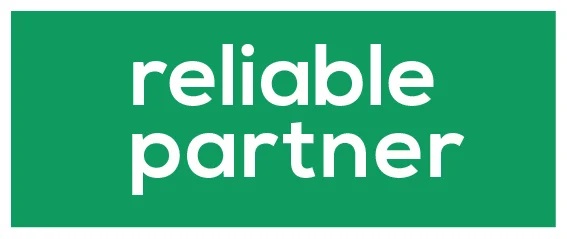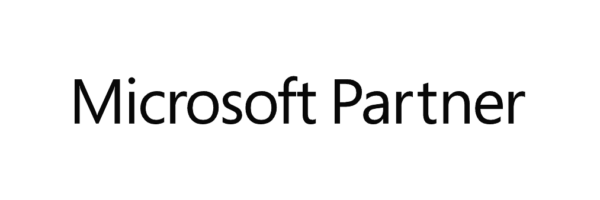References
Index IT has implemented numerous projects with its customers over the years. Check out our references on this page.
We have developed our own Indox tool, but through us you can also get customized solutions from other manufacturers' products for every special need.

Meeting the needs of diverse industries

Finnish Standardization Association SFS ry is the central Finnish standardization organization. SFS is responsible for all standardization in Finland, with the exception of the electricity and telecommunications sector. SFS uses Open Text's Content Server as its document management system. The system consists of two databases, the production and distribution database, and their test environments. The standards are published in PDF format.
Index IT has extensive experience in implementing various customizations and integrations with Content Server. Index has implemented several integrations into SFS's Content Server system with other SFS systems, as well as developed a DocumentImport system integrated into Content Server. With the versatile functions of the system, SFS's ability to produce standards has been significantly facilitated and enhanced. For example, the system has comprehensive workflows for the entire translation review and publication process of the standard.
"Index IT has been our partner for years. Over the years, they have developed an accurate picture of our processes. Knowing these makes it easier to combine technological know-how with projects." Antti Saari, leading technology expert.
The long-standing partnership between SFS and Index is an example of our effort to understand our customers' operations and our ability to offer our expertise in the best possible way. The system is constantly being developed in close cooperation with experts from SFS and Index. Index also offers a support service for the system, which guarantees its trouble-free operation.
Rakennustieto Oy uses the Indox cloud service to produce and distribute the General Quality Requirements for construction publications (RYL), such as InfraRYL. RYL is a series of publications that define criteria to be implemented in Finland for construction materials, construction work and finished construction parts. There are currently a total of five electronic RYL publications and they are updated annually.
"Rakennustieto and Index IT have collaborated for over ten years on RYL publications. Structured content and its modifiability in the Indox cloud service has made it possible to continuously update publications and present content versions to users in a controlled and flexible format." Jussi Kaskia, systems architect Rakennustieto Oy
Rakennustieto's RYL process is multi-phase and suitable technologies are needed to support it. A special feature of Rakennustieto's RYL process is the statement phase, where opinions on the content are requested from experts in the field. The material to be published is structured for processing in the Indox cloud service. In the end, the material is published for customers to buy from Rakennustieto's online store.
The Indox cloud service is tailored to Rakennustieto's needs. For example, the transfer of large materials takes place in the background of the system with the help of a replication tool, and mechanisms supporting the process, such as the Word2DITA tool, have been introduced to help the publishing process. The system is developed in close cooperation with Rakennustieto's experts.

Sähköinfo Oy produces the D1 manual for electrical installations in buildings in the Indox cloud service. The book contains plenty of instructions supplementing and illustrating official regulations and standards in the field. Sähköinfo produces an e-book and a PDF suitable for printing from one structured material.
"The e-book makes it possible for our customers to read the book easily, e.g. on a tablet. A printed book is still a much-needed tool, for example on construction sites. With Indox, an e-book and a printable PDF are created in one go." Satu Valldén, Service Director Sähköinfo Oy
The transition to Indox and structured content production began with the structuring of the original folding material. It was implemented with the Word2DITA tool. As the name suggests, the tool converts Word files such as .docx directly into XML data according to the DITA standard. From the tool's settings, you can choose whether one DITA topic is produced from one Word, or whether each title level is made into its own DITA topic.
The D1 e-book is produced using the Oxygen WebHelp tool. WebHelp is a responsive and modern online publication that allows you to create an html-based website from structured material. It consists of several html pages assembled into a system that provides a table of contents, indexing, and search functionality.
Sähköinfo produces several publications that will be transferred to Indox when the material is updated. This will facilitate the updating and publication of the material in the future, when all desired publication formats can be produced from one material.

The pharmaceutical safety and development center Fimea maintains and promotes the safety of the use of medicines, healthcare equipment and supplies, and blood products. Its task is also to publish up-to-date information on medicinal products. Fimea chose Indox as its XML publishing system and OpenText Content Server as its knowledge management system.
Summaries of product information and package leaflets for medicines on Fimea's website
Medicines sold in Finland must have a marketing authorization. Along with the sales license application, the applicant must submit e.g. summary of product characteristics and package leaflet of the medicinal product. After the marketing authorization has been granted, Fimea publishes the approved product summaries and package leaflets on its website via the Indox XML publishing system connected to the Content Server software. Product summaries in Word format are automatically converted to XML format every time they are exported to the Content Server document archive. Product summaries in XML format and their metadata are retrieved from the Content Server and transferred to the Indox XML publishing system using the Indox Content Server Interface piece.
Comprehensive search functions
There are many ways to search for published medicinal products; in addition to the name of the medicinal product, based on the active substances, side effects or ATC classification (anatomical-therapeutic-chemical classification) of the preparation. The product information can also be found based on the name of the marketing authorization holder or the marketing authorization number. Medicinal products whose marketing authorization has been revoked are automatically removed from the system.
The search result contains a link to both the drug's summary of product characteristics and the package leaflet in PDF format.

Trimble Solutions Oy, formerly Tekla Structures, set documentation in front of new challenges
The software company Tekla Oyj moved into the DITA era of documentation for its building information modeling software. The Tekla Structures model is used in all phases of the construction process, from sketch design to manufacturing, erection and construction management. Extensive and modular software required modular documentation and new technology made it possible.
The challenges and goals of documentation
The Tekla Structures product is a comprehensive solution for structural design, manufacturing and detailing of steel and concrete elements, and construction management. There are users of the software in more than 80 countries. There are twenty different language versions of the documentation. Tekla Structures product documentation was produced for years using the style-based FrameMaker software. The growth of the material and the increase in language versions made maintaining it heavy and time-consuming and required a lot of manual work. Tekla also saw the need to produce user group-specific documentation and expand the offering even further. "We wanted to create a system where the management and maintenance of material is easier," sums up documentation manager Rune Backman from Tekla. "The goal of Tekla's documentation group was to have a component-based content production system that supports the modularity of Tekla Structures and enables a cost-effective way to manage the translation process of more than ten parallel language versions (e.g. Japanese and Chinese)," says consultant Martti Poutanen from Index IT Oy, who was selected as the system supplier. "During the analysis phase, the XML-based OASIS/DITA architecture (Darwin Information Typing Architecture) was chosen as the basis for the new system. In addition, the traditional file-based storage method was replaced by a database-based solution."
The progress of the project
The change project started in the fall of 2007 with the definition and needs mapping phase. In order to achieve a sufficiently precise definition, it was refined many times during the project, as new needs and situations emerged. The material was converted to XML format and split into individual topics. The language versions of the material were synchronized with the main version, after which the material was imported into the database. At the same time, functionality was created for maintaining language versions and importing changes made in the main version to them. Finally, the focus was on the functions needed to publish the material and the formatting and finishing of the material to be published. In particular, we wanted to make the publication side as automatic as possible and to minimize manual work steps. The first version of the Tekla Structures product multilingual documentation using the new system was published in April 2008.
The system now and in the future
The core of the new production system is MS SQL Server and Index IT's Indox DITA XML Content Manager. The material is produced directly in XML format and stored in the database. The information is modular and metadata used in the document compilation phase is attached to it. Previously created material is reused when creating new topics, and the documentation is changed in an increasingly user-friendly direction. "The management of language versions has become easier and the time spent on the publication phase has been reduced," says Backman. "In the future, Tekla will focus even more on the further processing of material and the production of customer- and configuration-based material. In addition, we plan to make better use of the distribution channels that have opened up with the new system. The new system makes it possible to support customers with more versatile material and more comprehensive documentation. The documentation teams for Tekla's other products will also use the same system to produce and publish documentation." The system has been expanded in recent years, e.g. With Indox's automated batch run features to automatically produce different final documentation versions.

Implementation of the framework and budget information system of the Ministry of Finance
Affecto and Index IT jointly delivered the Ministry of Finance's new framework and budget information system. Index's role as the project's XML expert is central. The collaboration between Index and VM has continued since 1998. That was when we switched from a traditional word processing-based system to a more automatic way of producing different versions of the state budget and supplementary budgets for the government, parliament and finally the entire nation. The system has been one of the most advanced budget systems in the world. The new system utilizes the structure of the documents, which allows the same document to be modified in many places at the same time and the system automatically manages the different versions. The user interface is browser-based. The cooperation of dozens of officials in several different ministries, a tight completion schedule and last-minute changes place significant demands on the production process of the state's income and expenditure estimate proposal. The production system has been brought to a level of automation that makes it one of the most advanced budget systems in the world.
Hankkeen tarkoituksena oli vähitellen siirtyä pois perinteisestä tekstinkäsittelypohjaisesta järjestelmästä kohti mahdollisimman automaattista tapaa tuottaa valtion budjetin ja lisäbudjettien eri versiot hallituksen, eduskunnan ja lopulta koko kansan ulottuville. Budjettidatan kriittisyyden ja järjestelmän jatkuvan toimivuuden vuoksi projekti on edennyt askel kerrallaan nykyiseen muotoonsa, jossa informaatio tuotetaan suoraan XML-muodossa ja samasta informaatiosta prosessoidaan automaattisesti paperitaitto- ja verkkoversiot kaikista talousarvioesityksen työvaiheista, hallituksen varsinaisesta budjettiesityksestä aina lisätalousarvioihin. Konvertointityövaiheiden poistuttua aineistoon voidaan tehdä viime hetkilläkin muutoksia tarvitsematta toistaa koko prosessia. Järjestelmä on toteutettu kokonaan selainpohjaisena ja sen käyttöliittymään on lisätty budjettitiedon luonteen ja käytön huomioivia lisäpiirteitä. Sisällön muokkaus ja budjettiprosessin eteneminen tapahtuu yhden ja saman sovelluksen kautta. Tämä on nopeuttanut uusien työskentelymenetelmien käyttöönottoa ja minimoinut uudelleenkoulutuksen määrän.
Thanks to the database-based Indox production system, access rights for different parts of the budget material and electronic commenting on the material enable a flexible production process, and with the help of version control, information about all work phases remains in the database.

Index IT has delivered Kela's benefit guidelines information system, related expert services and system maintenance. The benefits guidance is one of Kela's largest and most versatile guidance sets, which serves as a key tool in Kela's benefits solution and customer service work. It helps ensure the consistency and correctness of the service the customer receives.
The benefit instructions production system is the browser-based XML solution Indox, which is based on the DITA model (Darwin Information Typing Architecture). "Thanks to the component-based architecture, the reuse of the content of the benefit instructions and the management of changes becomes easier. Compiling and publishing the instructions in different formats, such as PDF, is automated," says Index's information architect Martti Poutanen. Content producers only need a browser as their tool, through which they can see the benefit guide base and edit the instructions. The system has been renewed in 2022 with regard to the editor integrated into it, which was updated to the Oxygen XML WebAuthor editor.



